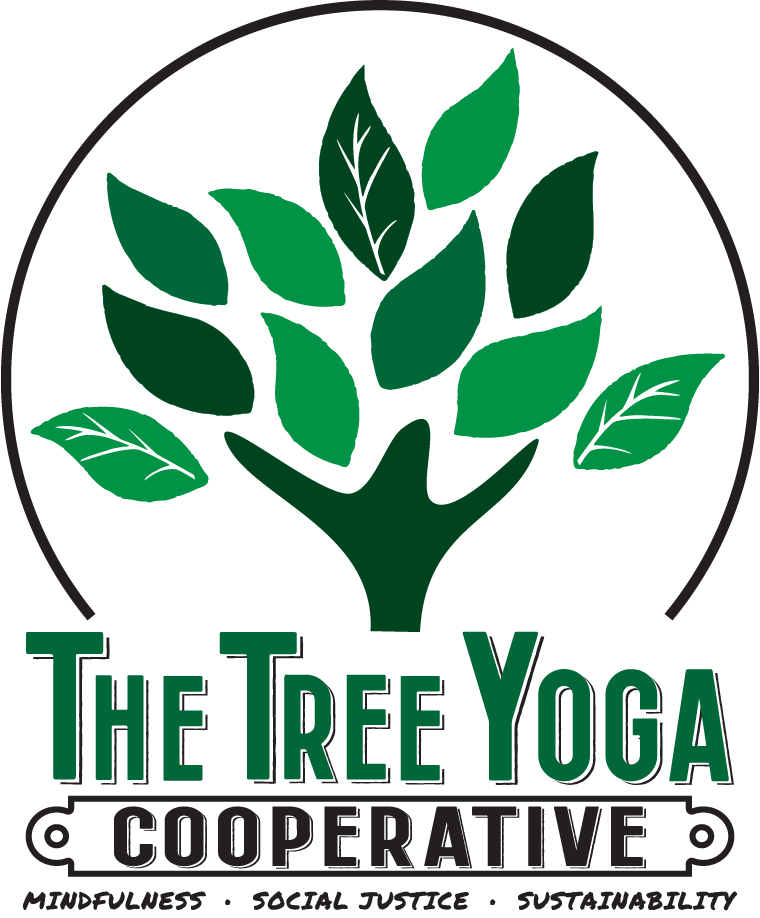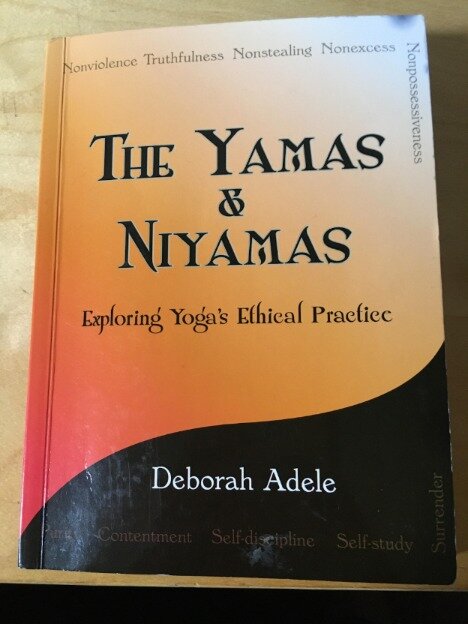Week Two
After a busy first weekend of introductions and exposition, the focus for Weekend #2 of our YTT training sessions were on Surya Namaskar A & Creating a Sacred Space.
Saturday we covered a basic vinyasa series - Surya Namaskar A or Sun Salutation - on which most (if not all) modern yoga flow series are based.
Sunday we completed our deconstruction and exploration of the asanas in the Surya A series and turned our attention to another equally important topic: The Art of Teaching and Creating a Sacred Space.
Wednesday night we got into a discussion of nonviolence, the first principle of the yamas (observances) in the spiritual yoga practice
SATURDAY
We began the Saturday session with our usual ritual of Opening Circle, each trainer and trainee sharing about their day, their week, or progress in their own personal practice. After everyone had a chance to share, Jana made a poignant statement saying she appreciated seeing a little bit of herself in what each person shared – highlighting the little ways in which we are all connected.
...
Surya Namaskar can be translated from Sanskrit to mean “a salute to the sun”. It is a set series of nine flowing postures which can be seen as a form of devotion to the sun both within and without.
The Surya Namaskar A series (you can see here some of the familiar postures of a modern yoga sequence).
In a vinyasa flow (where the breath is linked to the progression of postures) Surya A serves as a foundational series for contemporary yoga teachers on which to build sequences and add their own flair. For our class we broke down each posture, discussing proper alignment, common misalignments, and modifications for various support needs.
This conversation flowed partially into Sunday where J led the class in a rousing discussion on chaturanga dandasana. You may know chaturanga, the low to the ground posture that prepares you for cobra or upward facing dog. During this class we learned that most beginners have a difficult time with this asana. Indeed, I learned that I (along with many other classmates) had in fact been practicing this asana incorrectly for years! I demonstrated my chaturanga for the class and J corrected my alignment. Proper alignment is important in yoga because it sets the tone for the entire physical practice. It can prevent injury, allow for greater flow of energy, and can enable the practitioner to hold the posture for longer periods of time with greater ease.
Our trainer, J, demonstrates a properly aligned chaturanga dandasana.
It was an excellent opportunity to learn and in so doing, we as a class learned how to teach the proper alignment to our potential students.
SUNDAY
For this Sunday’s self-practice we had our first student music host. Each week a different trainee will have the opportunity to choose the musical playlist and set the vibe for that week’s 45 minute self-practice. This is a fun way to share the self-practice experience with other students and to practice curating our own playlists we may use in class as teachers. Music and vibe setting are a few of the many aspects that goes into creating a sacred space. And creating a sacred space is an important part of The Art of Teaching - our subject for the next three Sundays.
Once we finished our asana breakdown of the sun salutation series, Jana moved our discussion to the art of teaching. It turns out there is a great deal to consider when it comes to preparing to teach a yoga class. To be able to teach really begins with creating a sacred space - or the way I like to think of it is to create a space with purpose and intention.
We covered much in our hour long discussion. Some points of interest from our lecture and class discussion were:
Be prepared with music, proper cues - even preparing to be spontaneous if plans do not go as anticipated, set rules of engagement so students know what to expect.
Empty out, making preparations to be able to hold space for your students, connect with your own practice (and purpose)
Have integrity, always be a student and teach what you are intimate with.
Be yourself, each teacher will attract their own kinds of students - to find these people and authentically connect you must be yourself!
WEDNESDAY
After our Wednesday evening practice together we began our weekly examination of the yamas (restrictions) and niyamas (observances), two parts of the eightfold path of Ashtanga yoga. These principles are meant to be ethical guidelines to direct the practitioner in leading a well lived life.
One of our required texts for the class, an exploration of the yamas and niyamas.
Nonviolence, or ahimsa in the ancient Sanskrit, is the first restriction and is foundational to the practice of the remaining yamas and niyamas.
An excerpt from our week’s reading with a definition of nonviolence.
As a class we discussed how the practice of nonviolence begins with ourselves as individuals, both on and off the mat; both inside the studio with our students and outside in our own lives. We discussed the seeds of violence (fear, internal imbalance, dissociation from the body) and how it can come to express itself subtly through anger, emotional violence, or gaslighting before manifesting in its physical form. The discussion highlighted even our culture’s obsession with sarcasm and pettiness as small acts of harm done to the other.
So how does one counter the violence that seems to saturate our culture? Self-compassion, autonomy, sovereignty, and living in awareness were some of the tools offered by my fellow classmates as ways we can live in nonviolence.
LET’S HEAR FROM THE CLASS!
What were you most surprised/excited to learn during this week’s training sessions?
“I was most surprised by how quickly that we were able to establish a sense of community. Especially since the YTT is being offered online. It's a JOY to be practicing yoga with all Black/ Brown bodies. There's an innate understanding. A communication flow from the instructors to us and back that is within a cultural context of understanding. So grateful for the instruction, as well as for our YTT Spring "Tree Cooperative" cohort!”
-Victoria Moran, YTT Trainee Spring 2021
GLOSSARY
Vinyasa - can be translated to mean “to arrange in a specific way.” Vinyasa is a style of yoga that involves coordinating movement with the breath to flow from one posture to another. Additionally, a yoga teacher may tell the class to “take a vinyasa” during a sequence which usually means go into chaturanga, upward facing dog, and downward facing dog.
Surya Namaskar A - can be translated to mean “a salute to the sun.” It is a specific vinyasa series made up of the same postures. This is a practice that is a part of the spiritual eightfold path of yoga, also called Ashtanga yoga.
Yamas - the first limb of Ashtanga yoga which can be translated to mean “restrictions.” These restrictions are nonviolence, truthfulness, non-stealing, non-excess, and non-possessiveness.
Niyamas - the second limb of Ashtanga yoga which can be translated to mean “observances.” These observances are purity, contentment, self-discipline, self-study, and surrender.
Ashtanga Yoga- ashtanga is a Sanskrit word meaning “eight limbs”. Ashtanga yoga refers to the spiritual yogic path outlined by the yogi sage, Patanjali. This eightfold path includes the yamas (restrictions), niyamas (observances), asanas (postures), pranayama (breath control), pratyahara (sense withdrawal), dharana (concentration), dhyana (meditation), samadhi (a state of unity).




